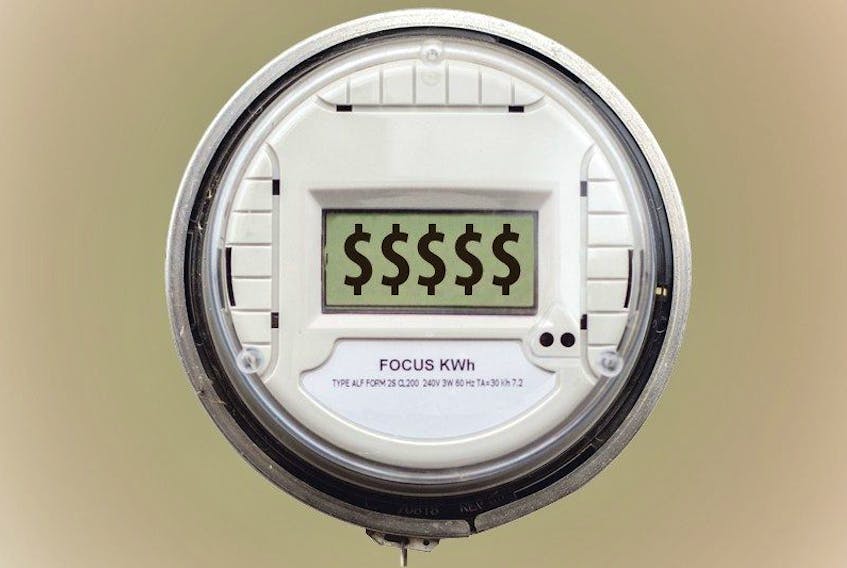You can almost feel the anticipation as the date approaches for the arrival of the first post-Muskrat Falls monthly power bills, possibly sometime in 2020.
People just can’t wait to pay, because hundreds of pages of reports and hours of politicians’ verbiage have assured them that they won’t actually have to pay … much.

Believe that if you want to, just as so many — too many — Newfoundlanders believed, since 2010, the hype and bombast about the fabulous benefits of the Muskrat Falls project.
The Public Utilities Board last week released two reports about “rate mitigation,” and the good news is that for the next five years or so, your monthly power bill will increase by only 50 per cent, rather than the 100 per cent that would be required for Muskrat Falls to be fully financed by ratepayers, as per the original plan.
The bad news is that the good news is pure fantasy.
According to the Liberty Consulting Group of Pennsylvania, Newfoundlanders’ per kilowatt hour rate — currently averaging about 13 cents — will never, ever reach 18 cents.
Also, pig farming in Newfoundland will become impossible, because the pigs will just fly away.
The fantasy is forecast 10 years out, when, in 2030, Newfoundlanders will pay a mere 14.5 cents per kWh, rather than the 24 cents per kWh they would pay without “rate mitigation.”
Look! There goes a flock of pigs.
“Rate mitigation” has been, is and will always be a fabrication. It is a euphemism for “government subsidy.”
The more accurate, honest term — government subsidy — acknowledges that whatever money is put toward subsidizing ratepayers’ monthly power costs will by definition not be put toward other public uses, such as schools, roads, hospitals and whatnot. Or, taxes will have to go up.
Liberty consulting admits as much, albeit in the dense language of report-speak: “Producing this very sizeable offset will require the province to consider the implications for its financial position and its ability to fund its operations without access to amounts identified in this report as available for rate mitigation to reduce the significant increase in electricity rates required to recover MFP (Muskrat Falls project) costs.”
Whew. In standard English: “Rate mitigation”/government subsidies will entail cuts in other public services, or tax increases.
The two reports released by the PUB — one by Liberty Consulting and the other by Synapse Energy Economics Inc., based in Massachusetts — both address the potential of putting the provincial government’s equity returns from the Muskrat Falls project toward “rate mitigation.”
(Note: for the sake of accuracy and forthrightness, always use quotation marks around “rate mitigation.”)
In household terms, this is like shifting money from one pocket to the other.
Say you want to pay down your mortgage faster. You could assign some funds from your grocery budget to your mortgage payments, but then you might go hungry for a while, or cut back on pricey things you love, like mangoes or salmon.
For the sake of accuracy and forthrightness, always use quotation marks around “rate mitigation.”
Or you could decrease the monthly amount you put into your children’s registered education savings plan, but then your kids would have to grow up stupid.
It is a closed system. At the end of the day — no, not that accursed cliché! — at the end of the month, bills have to be paid, or some things have to be gone without. As with a household, so with a government.
One last cliché: Liberty and Synapse both treat the government with kid gloves, when bare knuckles are required.
My goodness, yes, look at all the savings and sources of money that can be found to go toward “rate mitigation.” Why, by 2039, the government will be able to put a whopping $700 million per year toward “rate mitigation.”
But reading both sides of the ledger, you see that the government’s required annual payments for Muskrat Falls in 2039 will be $1.2 billion. Another $500 million will have to be found. Guess who gets to dip into their wallets for that chunk of small change?
The two reports each deserve an F, if only because they fail to address a pair of flying pigs that won’t or can’t happen: an annual $200-million bailout from the federal government (won’t happen, politically); and saving $178 million a year by closing the Holyrood Thermal Generating Station (can’t happen, because a reliable backup is needed, unless Newfoundlanders are A-OK with weeks-long power blackouts).
Brian Jones is a desk editor at The Telegram. He can be reached at [email protected].
RELATED








